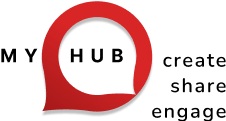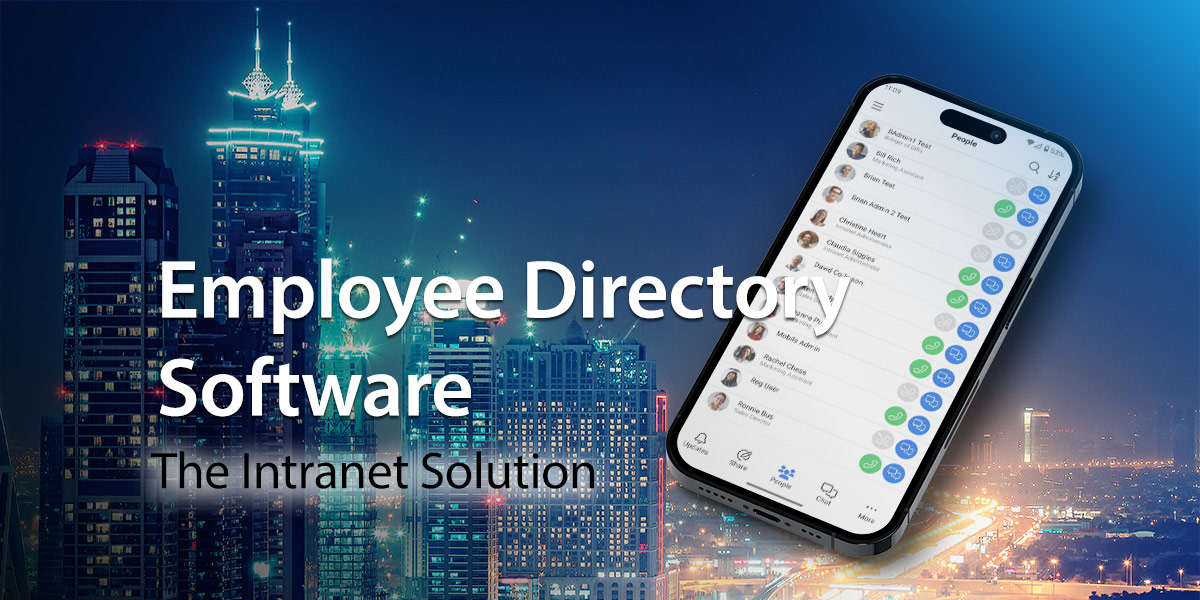Collaboration is the rocket fuel that powers up all businesses, whether Fortune 100 companies or SMEs. However, it’s sometimes taken for granted in the work environment. Employers tend to assume workers have a natural ability to get along with each other, collaborate effectively, and produce successful outcomes. The reality is often very different. Like other workplace attributes, team collaboration skills must be nurtured and developed.
So, does your team have the required workplace collaboration skills? The post will help you answer that question as we take a deep dive into what makes a truly collaborative workplace.
First, let’s define effective workplace collaboration.
What Is Effective Workplace Collaboration?
According to the Oxford English Dictionary, collaboration is working with someone else to create or produce something. The measure of effective workplace collaboration is whether the output is better than what an individual working alone would have achieved. Sounds simple enough, right?
However, effective workplace collaboration comes with several challenges. And so, the first step to creating a collaborative environment is to ensure your organization has addressed the challenges. Once that step is completed, you can consider whether your team has the required collaboration skills.
Why Is Team Collaboration Important?
Joint working delivers a ton of business benefits. Here are just some of the headlines:
Idea Sharing
Many breakthrough moments have resulted from workers simply sharing their bright ideas.
Different employees have varied experiences, perspectives, and insights. Sharing and developing ideas together can lead to breakthrough thinking. It could be a product innovation or a productivity improvement. Whatever the case, collaborative efforts support idea-sharing and a culture of creativity and innovation.
Problem-Solving
Bringing people together with different skills increases the amount of knowledge and expertise you can draw on. A collaborative team helps you solve problems faster and drives better business outcomes.
Knowledge Transfer
Sharing internal knowledge is much easier within a collaborative workplace. Information and expertise flow more readily, reducing the risks associated with critical employees changing jobs or leaving altogether.
Staff Development
Good collaboration provides workers with more opportunities to learn and develop. Employees acquire new skills and knowledge when working closely with other team members. It’s a win-win situation. The employer benefits from the worker’s increased expertise. And the employee will feel valued and appreciated by the organization when allowed to develop.
Improved Efficiencies
Completing tasks and meeting deadlines is much quicker and easier when there’s a joint effort. The task can be broken down and divided up based on individuals’ strengths. And for the company, that means improved efficiencies and more productivity.
Workplace Collaboration Skills: Develop The Right Company Culture
For collaboration abilities to thrive in a company, there must first be the right culture. Business owners, managers, and executives need to create the perfect conditions to develop good collaborative skills across the board. And this involves setting some important boundaries.
The following steps need to be in place before collaboration skills are developed.
Clear Definitions
Good collaboration requires a clear division of labor. Roles and responsibilities should be assigned to each party from the outset. Be sure to agree on what each partner contributes to the collaborative process.
Project definition and a common goal will be more detailed for large teams involving workers across the organization. But it’s good practice for even smaller collaborations. One or two sentences clarifying responsibilities and objectives are all that’s needed so the team understands what’s required.
Recognition And Respect For Others
Recognition and respect for the input of all collaborators is another essential starting point. All collaborators should be created equal. This applies even in large cross-departmental teams with members at different organizational levels. Every team member needs to feel that their contributions are as valid as anyone else’s.
Companies with the best collaboration skills foster a sense of tolerance and acceptance as the basis for team success. After all, completing projects requires diverse groups and individuals to work together. There will be differences in employees’ value systems, cultures, beliefs, and work methods. Rather than being a potential source of conflict, the organization should ensure that diversity is a strength.
Group Goals Supersede Personal Ones
In successful collaborations, the group’s goals are placed above individual ones. It’s the achievement of the wider project that’s important here. The egos and personal goals of team members take a backseat during the group project. Business owners and managers need to set this as a clear expectation for effective workplace collaboration.
It’s OK To Make Occasional Mistakes
A blame culture or holding a grudge against colleagues that make mistakes only sabotages the whole group’s efforts.
Successful examples of collaboration involve recognizing that errors will happen occasionally. And individuals have to be willing to apologize for any blunders in the interests of joint working. Plus, analyzing problems without assigning blame is critical to achieving the company’s goals.
What Are The Obstacles To Effective Collaboration?
Even with the right company culture, it’s not all plain sailing. Sometimes roadblocks and obstacles get in the way.
Here are some of the most common ones to keep an eye out for.
Unclear Objectives
Make sure the goals and objectives for collaborative work are clearly defined. Working together with a project plan and a common goal is more effective. Spend time developing a plan that sets out a shared vision, objectives, and milestones for success.
Poor Communication
When employees work together, they need to keep each other updated, so a lot is riding on regular communication.
Identify your channels and expectations about communications at the outset. Some collaborations use a dedicated intranet project space. And others prefer regular team meetings. While instant messaging and a private # channel work well in a distributed team.
Insufficient Resources
Sometimes joint working fails because of a lack of resources. It could be issues with budgeting, technological tools, unrealistic timeframes, or needing more personnel.
Successful collaboration requires the right combination of sufficient resourcing to get the job done alongside the right people.
Examples Of Collaboration Skills
Check out any job application, and there will likely be some requirements for team working. Every hiring manager will be looking at an applicant’s collaboration skills.
A National Association for Colleges and Employers survey discovered that over 60 percent of respondents look for evidence of the candidate’s ability to work well in a team. Collaborative skills are in hot demand.
However, it seems graduates may be lacking the critical skills business wants. According to one survey, only 37 percent of employers agreed that new graduates had the teamwork skills to facilitate collaboration.
So, what collaborative skills do employees need for the team’s success?
Top 20 Examples Of Collaboration Skills
We have broken down the required skills into direct (requiring face-to-face contact) and indirect or soft skills (relating to behaviors and attitudes).
Here’s a quick overview of the essential collaboration skills your employees should have in their skill set. And they are a helpful checklist if you want to improve your own collaboration skills.
Direct Collaboration Skills
- Ability to listen
- Patience
- Open-mindedness
- Respect for others’ opinions
- Conflict resolution
- Emotional intelligence
- Empathy
- Able to accept constructive criticism
- Diplomacy
- Curiosity
Indirect Collaboration Skills
- Project management skills
- Organizational abilities
- Critical thinking skills
- Time management
- Verbal communication
- Written communication
- Leadership abilities
- Decision-making
- Proficiency with productivity tools (for example, MS 365, Google Workspace, file sharing, etc.)
- Knowledge of relevant productivity systems (Agile, Waterfall, Lean, etc.)
Let’s look at these critical collaborative skills in more detail.
Communication Skills
It’s a given that good internal communication is at the heart of effective workplace collaboration. The better a team communicates, the better it will be able to cope with the challenges. Good communication will address any uncertainty about roles and responsibilities and clarity of purpose.
Effective workplace collaboration requires employees to express themselves clearly. And to keep colleagues updated on project progress. Employees must manage multiple communication channels so the team is on the same page. These channels include video-conferencing, instant messaging, email, phone, and in-person.
However, good communication covers a broad range of requirements. Good collaborators practice active listening. If they are unsure about a point, active listeners ask for clarification. They summarize what’s been said and check it out before moving on.
Of course, text-based communication is critical to successful collaborations. And even more so if it’s within a team of remote workers. But verbal communication is just as important. Good collaborators share their insights concisely and respectfully engage in debate, whether it’s a Zoom conference call or an in-person meeting.
Often underestimated but equally important is nonverbal communication. Your body language and tone often say more than the words you speak. Effective collaborators know how to use and read nonverbal communication, strengthening social relationships.
When drafting a job description, consider including the following requirements to ensure candidates have the necessary communication skills.
- The ability to actively listen to others’ viewpoints and facilitate and positively contribute to group discussions.
- A strong communicator who expresses themselves verbally, nonverbally, and in writing.
- Excellent organizational skills, managing different communication channels, and being able to clearly and concisely update colleagues on progress.
Problem-Solving Abilities
When it comes to collaboration skills, another must-have is problem-solving abilities. Creativity, using initiative, and finding solutions are all critical aspects of a collaborative team environment. This attribute is important for completing tasks and managing conflict resolution.
The best workplace collaborators can analyze problems and identify the severity and possible impacts. And they are also adept at brainstorming to come up with creative solutions.
To ensure you recruit the right candidate, consider including the following in your job descriptions:
- The ability to solve problems and seek innovative solutions in challenging situations.
- Gathers and analyzes information skillfully and within agreed timeframes.
- Can identify obstacles to success and achieve consensus about the best way forward.
Interpersonal Skills
People skills are fundamental to a good collaborator. The worker should be a team player focused on achieving common goals for the organization’s greater good. Those motivated by personal goals are not the best collaborators.
Having a sense of humor also comes in handy, along with the ability to speak respectfully to colleagues. The capacity to compromise is another crucial interpersonal skill. Some compromise is required to collaborate successfully. Reaching the best solution involves an amalgamation of ideas and plenty of compromises along the way.
All the best collaborators are open to new ideas. Open-mindedness is another essential attribute. Colleagues will inevitably have different views and unique perspectives. However, successful collaboration requires employees to respect those differences and listen to others’ opinions without passing judgment.
When it comes to the right interpersonal skills, consider including the following in your recruitment campaign.
- Capable of working well with others and effective at getting the input of everyone on the team, including quieter members.
- Able to compromise and is willing to make concessions to move the group forward in finding solutions.
- Treats others with respect, tact, and consideration regardless of status or position.
Resource Management Skills
Effective workplace collaboration is dependent on the ability to organize and share information. Juggling document management, project management, and communication channels while completing tasks requires excellent time and resource management skills.
Furthermore, successful employee collaboration involves individuals freely sharing their knowledge and expertise within the group. There’s no place for employees who hoard their knowledge or create information silos.
However, sometimes even the best-laid plans stumble. And so resourcefulness and adaptability also come under this category of necessary skills. Successful collaborators don’t panic or walk away when the project goes haywire. Instead, they roll their sleeves up, adapt to the new situation, and have a positive attitude.
The following requirements will help to ensure candidates have the necessary resource management skills.
- Able to effectively use tools and resources to organize and share information with colleagues.
- Uses their initiative to develop systems ensuring information, data, and knowledge are shared to support project objectives.
- Prioritizes and effectively plans work activities and can adapt to changing conditions.
Time Management Skills Plus Reliability And Dependability
Finally, workplace collaboration is all about trust. To be effective, each collaborator must trust that their colleagues will perform their roles to the best of their ability. Reliability, dependability, and consistency are critical to effective collaboration. If the team isn’t reliable, then chaos is inevitable. At best, the collaboration will be disappointing. And at worst, it will be a complete failure.
Therefore, organizational abilities and time management skills are essential collaboration skills. Effective collaborators can handle their responsibilities, manage workloads, and meet deadlines.
This aspect is so vital that you should include the following requirements in your job descriptions.
- Commitment to investing the necessary time and energy to complete the tasks and fulfill the role’s expectations.
- Able to meet the required deadlines for the position and individual contributions to project teams.
- Develops strategies to achieve organizational goals and team objectives on time and within budget.
Examples Of Collaboration In The Workplace
What does effective workplace collaboration in action look like? Let’s take an everyday scenario common to most organizations. Using this example, we illustrate why collaboration skills are so critical.
Workplace Scenario: Development Of A New Marketing Strategy
Most companies have a marketing strategy, so let’s assume your one is up for review. How would you approach this task in your company?
For most businesses, the review involves selecting a few key staff and setting up a meeting. The current marketing strategy is then revised over email. The draft document is usually sent around several times as edits and comments are actioned.
No doubt, there will be a few glitches along the way due to misunderstandings about roles and responsibilities. No worries, you get there in the end. Once the board agrees on the new strategy, its publication is announced in an all-staff email. And hard copies are distributed across the company.
Does this have a ring of truth for your business? Well, it’s certainly not an unusual approach. But how would the process work in a company with effective workplace collaboration skills? Digital collaboration tools certainly make the job much easier. And an intranet has much to offer in this space. Let’s take a look.
1. Setting Up A Project Team
The intranet’s staff directory identifies areas of expertise and subject knowledge. Therefore, setting up a project team with cross-departmental representation is much easier. Clear roles and responsibilities are assigned and agreed upon by every team member.
2. Create A Shared Project Space On The Intranet
Access is restricted to the project team only. Regardless of location, members of the team use the project space to brainstorm ideas and share insights or information.
3. Develop A Project Plan And Timeline
Key milestones and accountabilities are identified, and the project plan is published on the intranet’s project space. Team members report on progress in real-time using an MS Project spreadsheet embedded in the intranet project space.
4. Workers’ Views Are Sought Through An Intranet Poll
Consulting with the wider workforce helps to achieve a better final product. And it also enhances employee engagement across the board. We all know that engaged employees tend to be happier and more productive. So, be sure to canvass employees’ views through an intranet survey.
5. Develop A Draft Marketing Strategy
Instead of emailing different versions, embed MS Word or Google Docs in the intranet’s project space. Team members can simultaneously work and comment on the draft in real-time. And the document is automatically updated by the intranet. Any team member can be confident they are accessing the latest version.
6. The Board Approves Finalized Marketing Strategy
Save and printing and paper costs by publishing the strategy on the intranet. And inform the workforce through the intranet’s news feed. Employees can access or download the full strategy directly from the intranet anytime.
Faster, more streamlined, and ultimately more cost-effective, why not celebrate collaboration as the way to achieve better outcomes?
Benefits Of Workplace Collaboration
Most jobs involve some form of joint effort. Team members work collaboratively to achieve common goals in every industry. Collaboration skills fit into every organization’s must-haves.
With so much riding on workers’ ability to collaborate effectively, businesses cannot afford to leave it to chance.
Developing the right collaboration skills requires a proactive approach from employers. First, you need to foster a supportive company culture. And then, you have to select individuals with the correct skill set.
However, having the right collaboration tool also makes a big difference. And there’s no better tool than the intranet. Cloud intranet software makes it easier for staff to collaborate – whether in the office or remotely.
Improve Your Collaboration Skills
Reflecting on your practice involves self-awareness and high emotional intelligence. However, it is possible to develop your abilities and equip yourself with the collaboration skills employers expect.
Hopefully, the examples mentioned earlier have given you a different perspective and food for thought. Ask your manager or existing team for constructive feedback on your collaborative performance. And use the tips and advice we have shared to improve your collaboration skills.
Want to ensure your organization is geared up for collaboration in 2023? Contact the team at MyHub to explore how an intranet can help you build collaborative skills in your business. Sign up for a free demo or a 14-day no-obligation trial.












0 Comments